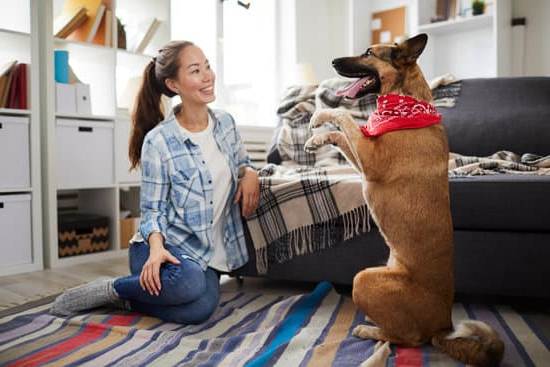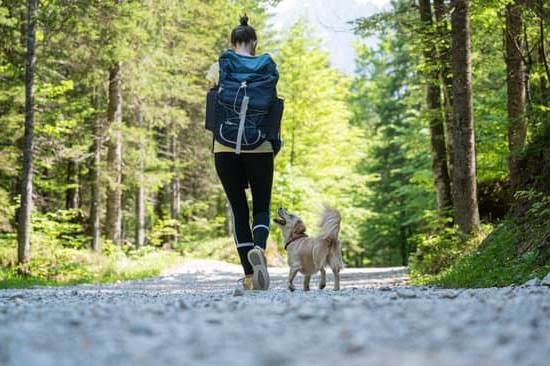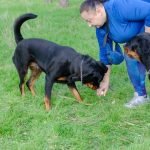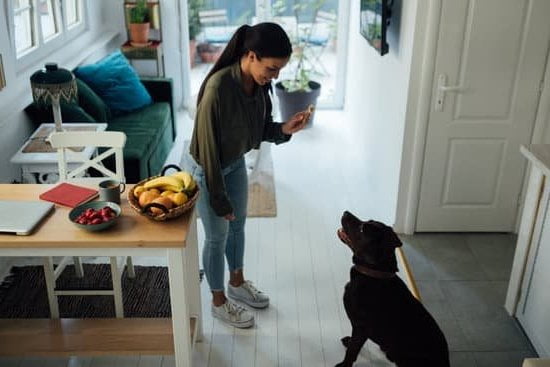Can you train a dog to like other dogs? Understanding canine behavior towards other dogs is crucial in addressing this question. Dogs, like humans, have unique personalities and preferences when it comes to social interactions with their own kind. Some dogs may naturally be more social and friendly, while others may exhibit fear or aggression towards other dogs.
Socializing dogs with other dogs from a young age is important for their development and well-being. This helps them learn appropriate behaviors and communication skills when interacting with their counterparts. However, not all dogs have had the luxury of early socialization, which can lead to difficulties in accepting or getting along with other dogs later in life.
Recognizing signs of fear or aggression towards other dogs is essential for dog owners. These can include growling, lunging, raised hackles, or avoidance behaviors. Addressing these signs promptly through training can help prevent conflicts and improve the overall quality of life for both the dog and their owners. Training plays a significant role in helping dogs overcome fear or aggression towards other dogs by teaching them coping mechanisms and positive reinforcement techniques.
The Importance of Socializing Dogs With Other Dogs
Socializing dogs with other dogs is a crucial aspect of their overall well-being and behavior. It helps them develop valuable social skills, reduces the likelihood of fear or aggression towards other dogs, and enhances their quality of life. Here are some key reasons why socializing dogs with other dogs is important:
- Prevents behavioral issues: Socialization from an early age can prevent common behavioral issues such as fear, aggression, or anxiety towards other dogs.
- Promotes confidence: Regular interactions with other dogs can boost a dog’s confidence and help them feel more comfortable in different situations.
- Improves communication skills: Dogs learn to communicate effectively with each other through body language and vocalizations during social interactions.
For some dog owners, the idea of socializing their dog with others may seem daunting, especially if their furry friend exhibits signs of fear or aggression towards other dogs. However, with patience, consistency, and proper training techniques, most dogs can be trained to like other dogs By gradually exposing them to positive experiences and using positive reinforcement techniques, fearful or aggressive behaviors can often be overcome.
- Seek professional help if needed: If your dog’s fear or aggression towards other dogs persists despite your efforts, consider consulting a professional dog trainer or behaviorist for additional guidance.
- Create positive associations: When introducing your dog to new canine friends, ensure that the experiences are enjoyable and rewarding for them by offering treats or praise for calm behavior.
- Monitor interactions closely: Always supervise your dog’s interactions with others to intervene if necessary and prevent any negative incidents from occurring.
Signs of Fear or Aggression Towards Other Dogs
Recognizing Fear and Aggression
When trying to determine if your dog is exhibiting signs of fear or aggression towards other dogs, it is important to pay attention to their body language and behavior. Some common signs of fear include cowering, trembling, tucking the tail between the legs, and avoiding eye contact.
On the other hand, signs of aggression may include growling, snarling, displaying teeth, or lunging towards other dogs. It’s crucial for dog owners to observe these behaviors and understand the underlying emotions that can trigger such reactions.
Understanding Triggers
In order to address fear or aggression towards other dogs in your canine companion, it is essential to identify the triggers that lead to these negative responses. This could be a result of past negative experiences with other dogs, lack of socialization during puppyhood, or even a genetic predisposition towards certain behaviors. By understanding what sets off your dog’s fear or aggression, you can begin working towards desensitizing them and gradually changing their reaction through proper training techniques.
Training Techniques for Overcoming Fear or Aggression
While some dogs may naturally get along with other dogs, others may need more time and effort to adjust their behavior positively. Positive reinforcement techniques can play a significant role in helping dogs overcome their fear or aggression towards other dogs.
By rewarding calm and relaxed behavior around other canines with treats, praise, or toys, you
The Role of Training in Helping Dogs Overcome Fear or Aggression
Understanding canine behavior towards other dogs is crucial in addressing any fear or aggression issues that may arise. Dogs can exhibit a range of behaviors when interacting with other dogs, from excitement and playfulness to fear and aggression. It is important for dog owners to be able to recognize these behaviors and understand the underlying reasons behind them. By understanding why a dog may not like other dogs, pet owners can better address the issue through training and socialization.
Training plays a significant role in helping dogs overcome their fear or aggression towards other dogs. Through proper training techniques, such as positive reinforcement and desensitization, dogs can learn to associate interactions with other dogs positively. By rewarding calm and friendly behavior around other dogs, pet owners can help their furry friends build confidence and trust in these situations. Additionally, consistent training can help modify negative behaviors and replace them with more appropriate responses when encountering other dogs.
Positive reinforcement techniques are especially effective in encouraging positive interactions between dogs. By rewarding desired behaviors, such as calmness or friendliness towards other dogs, pet owners
This can lead to more harmonious relationships between dogs and reduce the likelihood of fear or aggression towards other animals. With patience, consistency, and the right training approach, it is indeed possible to train a dog to like other dogs and enjoy their company in social settings.
Positive Reinforcement Techniques for Encouraging Positive Interactions
Positive reinforcement techniques are essential when it comes to encouraging positive interactions between dogs. By rewarding desired behaviors, you can help shape your dog’s responses and attitudes towards other dogs in a positive way. Here are some effective techniques that can be used to train a dog to like other dogs:
- Use treats as rewards: Treats are a powerful motivator for dogs. Whenever your dog displays calm or friendly behavior towards another dog, reward them with a treat. This helps create a positive association with the presence of other dogs.
- Utilize praise and affection: Dogs thrive on attention and affection from their owners. When your dog interacts well with another dog, shower them with praise and affection. This reinforces the idea that being around other dogs is a good thing.
- Engage in play sessions: Play is an important part of socialization for dogs. Encourage play between your dog and other dogs in a controlled environment. By allowing them to engage in fun activities together, they can build positive associations with each other.
By consistently using these positive reinforcement techniques, you can gradually help your dog develop a more positive attitude towards other dogs. Remember to be patient and consistent in your training efforts, as changing behavior takes time and effort. The key is to create a safe and enjoyable environment for your dog to interact with others, so they can learn to associate other dogs with pleasant experiences.
Gradual Exposure and Desensitization to Other Dogs
Dogs, like humans, vary in their social preferences and comfort levels when interacting with other dogs. Some dogs may naturally gravitate towards their fellow canines, while others may exhibit fear or aggression.
In the case of a dog showing aversion towards other dogs, it is possible to train them to change their behavior and develop positive associations with their furry counterparts. By employing gradual exposure and desensitization techniques, pet owners can help their dogs overcome their apprehensions and learn to enjoy the company of other dogs.
One important aspect of gradual exposure is to start with controlled interactions in a safe environment. This could mean introducing the dog to one well-behaved and friendly dog at a time, under close supervision. Over time, as the dog becomes more comfortable, the interactions can be increased in duration and frequency. It is crucial to monitor the body language of both dogs during these introductions to ensure that they are positive and stress-free.
Desensitization involves exposing the dog to stimuli that trigger their fear or aggression response in a gradual and systematic way. This technique aims to reduce the emotional reaction over time by associating the presence of other dogs with something pleasant or neutral. For example, providing treats or praise whenever another dog is nearby can help create a positive association. Consistency and patience are key when using desensitization methods in training a dog to like other dogs.
| Gradual Exposure and Desensitization Techniques | Benefits |
|---|---|
| Controlled interactions in safe environments | Builds confidence in shy or fearful dogs |
| Monitor body language for positive interactions | Promotes successful socialization experiences |
| Desensitization through positive reinforcement | Shifts emotional response towards other dogs |
Using Professional Trainers or Behaviorists for Difficult Cases
When to Consider Professional Help
Some dogs may exhibit severe fear or aggression towards other dogs, making it challenging for pet owners to handle on their own. In such cases, seeking the assistance of professional trainers or behaviorists can be incredibly beneficial.
These experts have the knowledge and experience to assess the root cause of the behavior and create a customized training plan to address it effectively. If you find that your dog’s reactions towards other dogs are consistently negative or escalating, consulting a professional should be a priority.
Working Closely With Trainers or Behaviorists
Professional trainers or behaviorists will work closely with you and your dog to set realistic goals and develop a training program that suits your dog’s specific needs. They will often use a combination of positive reinforcement techniques, desensitization exercises, behavior modification methods, and counterconditioning strategies to help your dog overcome their fear or aggression towards other dogs. As an owner, it is essential to follow their guidance diligently and practice consistency in training sessions to ensure progress.
The Benefits of Seeking Professional Help
By enlisting the help of professional trainers or behaviorists for difficult cases of fear or aggression towards other dogs, you are increasing the likelihood of success in changing your dog’s behavior positively. These experts not only provide valuable insights into canine behavior but also offer support and guidance throughout the training process.
With their expertise, dedication, and personalized approach, you can give your dog the best chance to learn how to like other dogs and enjoy positive interactions with them in the future.
Maintaining a Positive Relationship Between Dogs and Other Dogs
Positive reinforcement is a powerful tool in shaping a dog’s behavior towards other dogs. By rewarding calm and friendly interactions with treats, praise, or toys, you can help your dog associate positive feelings with meeting new friends. It’s important to be consistent in rewarding desirable behaviors to reinforce them effectively. Over time, your furry friend will learn that good things happen when they interact positively with other dogs.
In addition to positive reinforcement, gradual exposure and desensitization
This approach helps build trust and reduces anxiety, allowing your dog to feel more at ease around their fellow four-legged companions. Remember that patience is key when working on improving your dog’s relationship with other dogs – progress may take time, but the end result will be worth it for both you and your pet.
Conclusion
In conclusion, the question “Can you train a dog to like other dogs?” can be answered with a resounding yes. While some dogs may exhibit fear or aggression towards other dogs initially, with the proper training and techniques, they can learn to form positive relationships with their canine counterparts. Understanding canine behavior and the importance of socializing dogs early on are key factors in helping them develop positive interactions with other dogs.
Training plays a crucial role in helping dogs overcome their fears or aggressive tendencies towards other dogs. By using positive reinforcement techniques and gradual exposure, pet owners can help their furry friends build confidence and trust in their interactions with other dogs. It’s essential to be patient and consistent in training efforts, as progress may take time but can ultimately lead to successful outcomes.
In cases where a dog continues to struggle with liking other dogs despite training efforts, seeking assistance from professional trainers or behaviorists may be necessary. These experts can provide specialized guidance and support tailored to the specific needs of both the dog and the owner. Ultimately, by maintaining a positive relationship between dogs and other dogs through ongoing training and socialization, pet owners can help ensure that their furry companions lead happy and fulfilling lives within their canine community.
Frequently Asked Questions
How Do I Get My Dog to Be Friendly With Other Dogs?
The key to helping your dog be friendly with other dogs is through socialization. Exposing your dog to different canine companions in controlled environments can help build positive associations and reduce fear or aggression.
Can You Train a Dog Not to Hate Other Dogs?
It is possible to train a dog not to hate other dogs through behavior modification techniques. This may involve desensitization, counterconditioning, and positive reinforcement to change the negative emotions associated with other dogs into more positive ones.
How Do You Stop a Dog From Being Aggressive to Other Dogs?
To stop a dog from being aggressive towards other dogs, it is essential to identify the root cause of the aggression. Seeking professional help from a certified dog trainer or behaviorist can provide you with guidance on implementing proper training techniques tailored to your dog’s specific needs.

Welcome to the blog! I am a professional dog trainer and have been working with dogs for many years. In this blog, I will be discussing various topics related to dog training, including tips, tricks, and advice. I hope you find this information helpful and informative. Thanks for reading!





